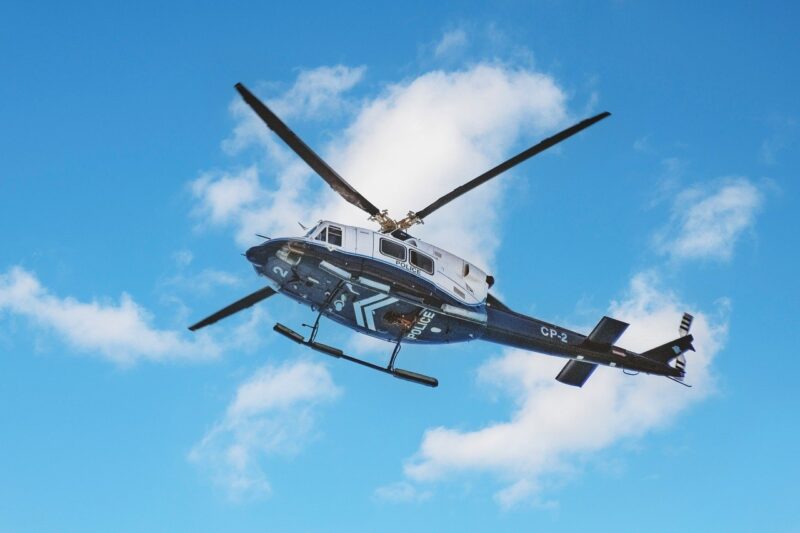Why Helicopters Are Used in Civilian and Military Rescue Missions
November 11, 2024

Rescue missions are often fraught with chaos and urgency, whether they are conducted in a military context or for civilian emergencies. Among the tools available for such missions, helicopters stand out due to their unique capabilities. This article explores why helicopters are the choice for many rescue operations and showcases their roles in both civilian and military scenarios.
1. The Unique Advantages of Helicopters in Rescue Missions
Helicopters are equipped with versatile capabilities that make them especially suited for rescue operations. Some of their major advantages include:
- Vertical Take-off and Landing (VTOL): Helicopters can take off and land in virtually any environment, whether it’s a crowded urban area, a narrow mountain ridge, or in open water. This flexibility allows them to get closer to the action compared to fixed-wing aircraft, and it eliminates the need for long runways.
- Hovering Capability: The ability to hover in place is crucial during rescue operations, allowing helicopter pilots to remain stable while rescuers are deployed or while assessing a situation from above. This capability is vital for missions that may require precision in challenging environments.
- Fast Deployment of Personnel and Equipment: Helicopters can quickly transport rescue teams, medical staff, and equipment directly to the scene of an emergency, significantly reducing the time it takes to provide aid and potentially save lives.
- Access to Remote Locations: Helicopters can reach areas that may be inaccessible by land, such as mountain ranges, dense forests, and offshore locations. This makes them invaluable in search and rescue missions where other modes of transportation may falter.
The combination of these advantages has established helicopters as a favored choice for rescue missions worldwide.
2. Helicopters in Civilian Rescue Operations
In civilian contexts, helicopters play essential roles in a variety of rescue scenarios, including:
- Medical Evacuations (Medevac): Helicopters are often used to transport critically injured patients from remote locations to medical facilities. Health care personnel are capable of providing immediate treatment en route, making this mode of transport crucial in time-sensitive situations.
- Search and Rescue Operations (SAR): In scenarios involving missing persons, natural disasters, or maritime incidents, helicopters are deployed to conduct aerial searches and provide swift assistance. SAR teams utilize helicopters to locate and retrieve victims effectively, ensuring a quick response to emergencies.
- Firefighting Support: During wildfires or large-scale blazes, helicopters equipped with water buckets or fire retardants are crucial for controlling flames and protecting properties. Their ability to hover allows them to drop water or fire retardants directly over hotspots with precision.
Civilian helicopters are often outfitted with specialized equipment, including medical supplies for air ambulances and infrared cameras for search operations, enhancing their effectiveness in rescue missions.
3. Military Helicopters in Rescue Missions
Military helicopters also play an integral role in various rescue missions, benefiting from advanced technology and tactical capabilities. Key functions include:
- Combat Search and Rescue (CSAR): Military helicopters are extensively utilized to recover personnel in combat situations. CSAR missions require rapid insertion or extraction of troops from dangerous situations. Helicopters like the HH-60 Pave Hawk specialize in these high-stakes environments, often flying in heavily defended areas to rescue injured or stranded soldiers.
- Disaster Relief Missions: Armed forces often support domestic and international disaster relief efforts via military helicopters. These missions may involve delivering supplies, evacuating victims, or assessing damage after natural disasters such as floods or earthquakes.
- Training and Preparedness: Military helicopters can aid in training responders and creating awareness about rescue operations. Through exercises and drills, military personnel develop skill sets essential for both combat and humanitarian missions, ensuring readiness for real-world scenarios in various environments.
These missions are often coordinated with multiple agencies, ensuring a seamless rescue operation when every second counts.
4. Challenges Faced in Helicopter Rescue Missions
While helicopters provide significant advantages in rescue missions, various challenges can hinder their effectiveness:
- Weather Conditions: Adverse weather conditions like heavy rain, fog, or strong winds can delay or impede helicopter operations. Pilots must assess weather factors continually, as poor visibility can create dangerous flying conditions.
- Technical Malfunctions: Helicopters, like any machinery, may encounter technical failures. Regular maintenance and checks are crucial, but unforeseen issues can still arise during critical operations, significantly impacting mission success.
- Limited Payload Capacity: Helicopters have weight restrictions, which can limit the number of personnel or the amount of equipment that can be transported at one time. Operations must be planned meticulously to maximize efficiency based on payload limits.
Despite these challenges, the benefits of helicopter use in rescue missions typically outweigh the drawbacks, especially in time-sensitive situations where lives are at stake.
5. The Future of Helicopters in Rescue Missions
The evolution of technology has led to several advancements in helicopter design and functionality that could enhance rescue operations even further. Future developments may include:
- Drones and Autonomous Systems: Unmanned aerial vehicles (UAVs) or drones could work alongside traditional helicopters, allowing for scouting missions in unsafe areas without putting human lives at risk. This technology might also assist in delivering supplies or performing reconnaissance during emergencies.
- Advanced Communication Systems: Incorporating better communication tech allows helicopter crews to work seamlessly with ground teams. Real-time sharing of information during rescue operations leads to more effective coordination and decision-making.
- Enhanced Training Simulators: Utilizing virtual reality and other simulation technologies can improve the training of personnel involved in rescue missions, enabling them to practice under various scenarios and conditions, ultimately enhancing operational execution during real missions.
As technology progresses, helicopters continue to evolve, promising to improve their roles in future civilian and military rescue missions.
Conclusion
Helicopters are invaluable in both civilian and military rescue missions, thanks to their flexibility, speed, and ability to reach difficult locations. With their unique advantages and the ongoing advancements in technology, the role of helicopters in saving lives is set to enhance even further in the future. Understanding the capabilities and challenges of helicopters in rescue missions enables us to appreciate their vital role in emergency response and recovery efforts worldwide.








